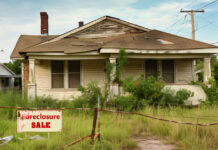The COVID-19 death toll in the U.S. grew by 2,079 in the past 24 hours to 30,665, a growth rate of 7 percent. Measured from a raw number standpoint, the 2,079 is a high number, but the 7 percent is relatively low compared to prior weeks. Globally, deaths exceeded 147,000.
The number of total cases attributed to COVID-19 in the U.S. is 667,945, up 31,028, or just 5 percent. Worldwide, the number of reported cases exceeded 2.181 million, up 91,000. The U.S. accounted for approximately a third of new deaths.
Deaths in New York also dropped to 606, the lowest number reported in the past 10 days. While the number of people hospitalized in New York continues to see slight declines, their overall case numbers have popped back upwards after seeing several days of decreases. This appears to be directly related to the number of tests taking place as more tests result in more positives.
If we take this data from New York and extrapolate it across the U.S., we can expect the number of cases nationwide to expand as more and more tests are rolled out. As more tests and antibody tests become available, we’ll need to come up with a new way to track cases: symptomatic cases, asymptomatic cases, and people with antibodies.
The latest data from New York also confirms the importance of keeping the elderly quarantined to protect them from exposure:
- Patients 80 and older account for 38 percent of all COVID-19 deaths in New York.
- Patients 70 to 79 account for 27 percent
- Combine these to age groups and almost two third of all deaths are in people over 70 years old
- 94 percent in people under 50.
- Younger people, including infants, children and teens do get COVID-19 and some die, but mortality is significantly lower than among the elderly.
No One-Size Fits all Reopening Plan
When you consider these age-related numbers plus the differences between rural and urban areas, it becomes clear that there will be no such thing as a one-size fits all reopening plan.
For example, there are significant outbreaks in Western Washington State that are far worse than cases in the Eastern part of the state. They could probably re-open half the state on Monday without seeing a surge in cases. This pattern is repeated in many other states: Urban areas and their bedroom communities have far higher caseloads and death rates than the small towns and rural areas.
The only problem is keeping people from the urban areas from traveling to the rural outposts once they re-open. Can you imagine how many people from a nearby urban area would swarm the first county to open its restaurants and bars? And how many would unknowingly bring coronavirus cases with them?
Quarantines, in the true sense of the word, are designed to keep the sick people contained. We need to find a way to contain areas with high levels of coronavirus so we can safely reopen areas with low levels. That’s where the National Guard can come in handy, because stopping an exodus from cities and suburbs would be a bigger job than the state police departments could handle. here may also be the need for some kind of pass that allows those in re-opened areas to transit hat area and receive services.
Reopening needs to take place on a regional or even county-by-county basis and should be staggered based on age. For example, we may have to treat a 26-year-old waiter differently than a 56-year-old waiter. We may have to treat a 26-year-old in a small town differently than we do one in an urban center. Regardless of where they live, we may have to treat a 26-year-old employee that lives alone or with roommates of a similar age differently than a 26-year-old that lives with his 56 year old parents or his 82-year-old grandparent.
It’s going to be difficult to orchestrate and it’s going to raise questions of prejudice. There are going to be people who hate a policy like this, resent it, or are offended by such a policy, but it will allow us to reopen certain segments of our economy in a manner than causes the least harm. And it should be very clear to everyone that we need to reopen the economy as fast as we can.
To put today’s numbers in perspective, refer back to yesterday’s numbers and news.








